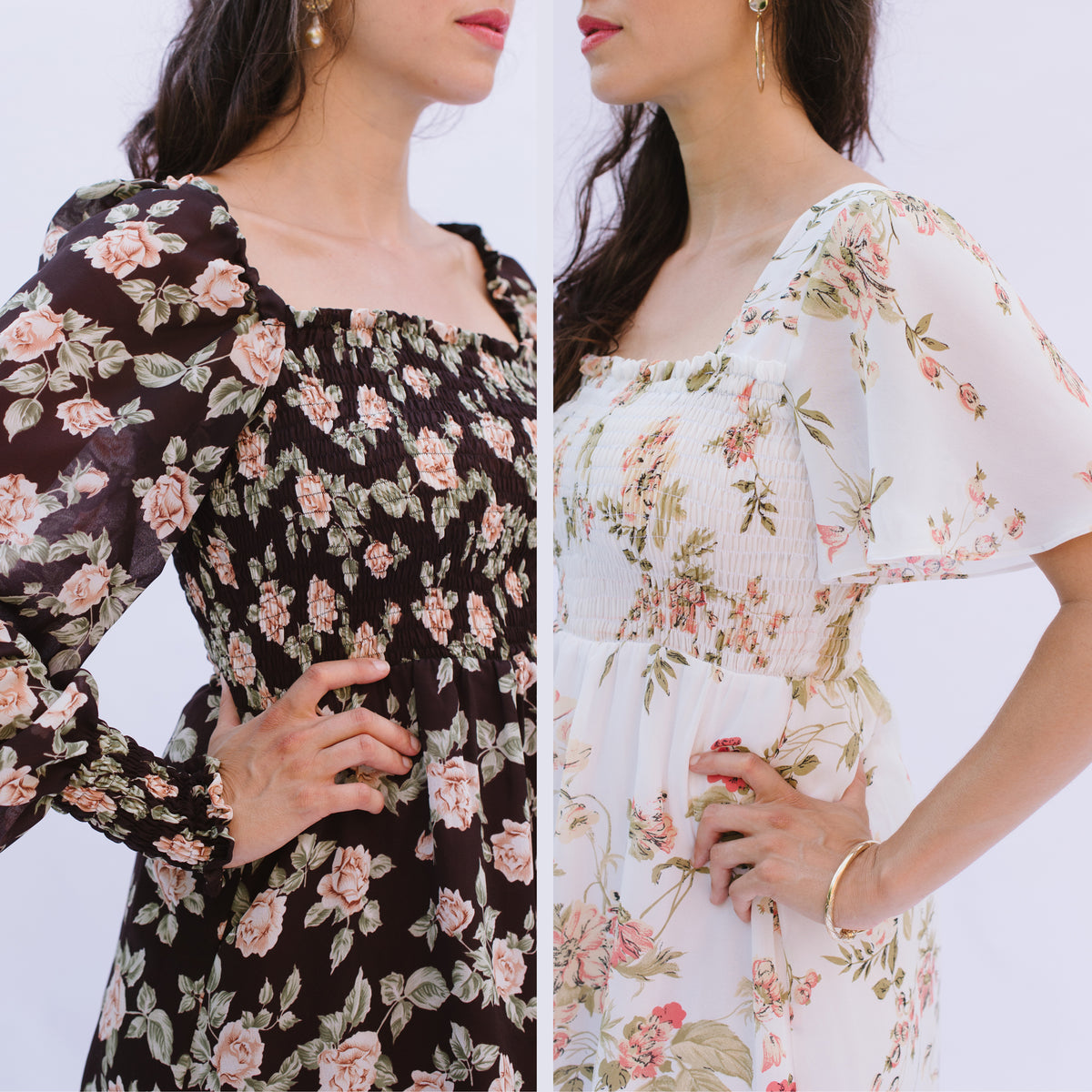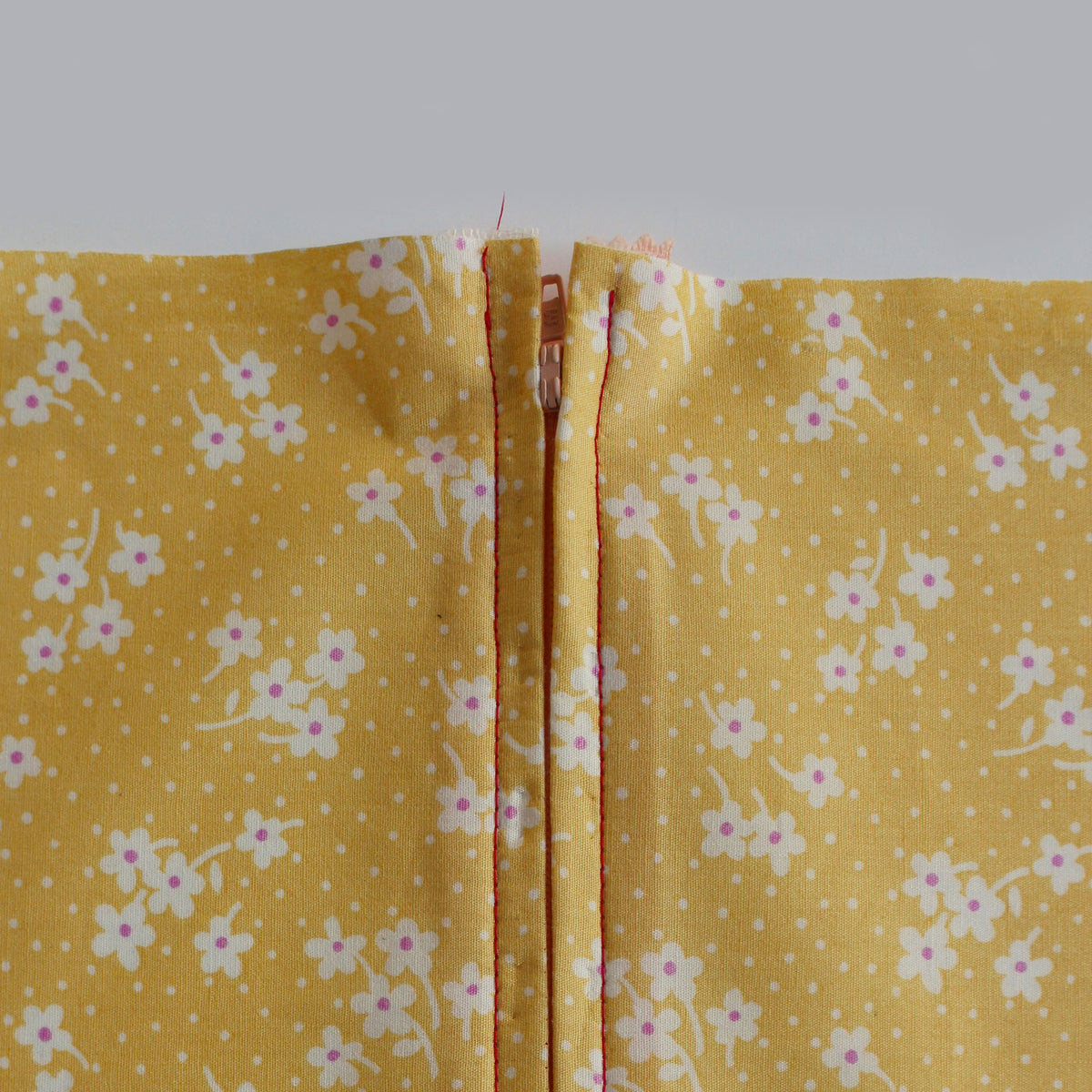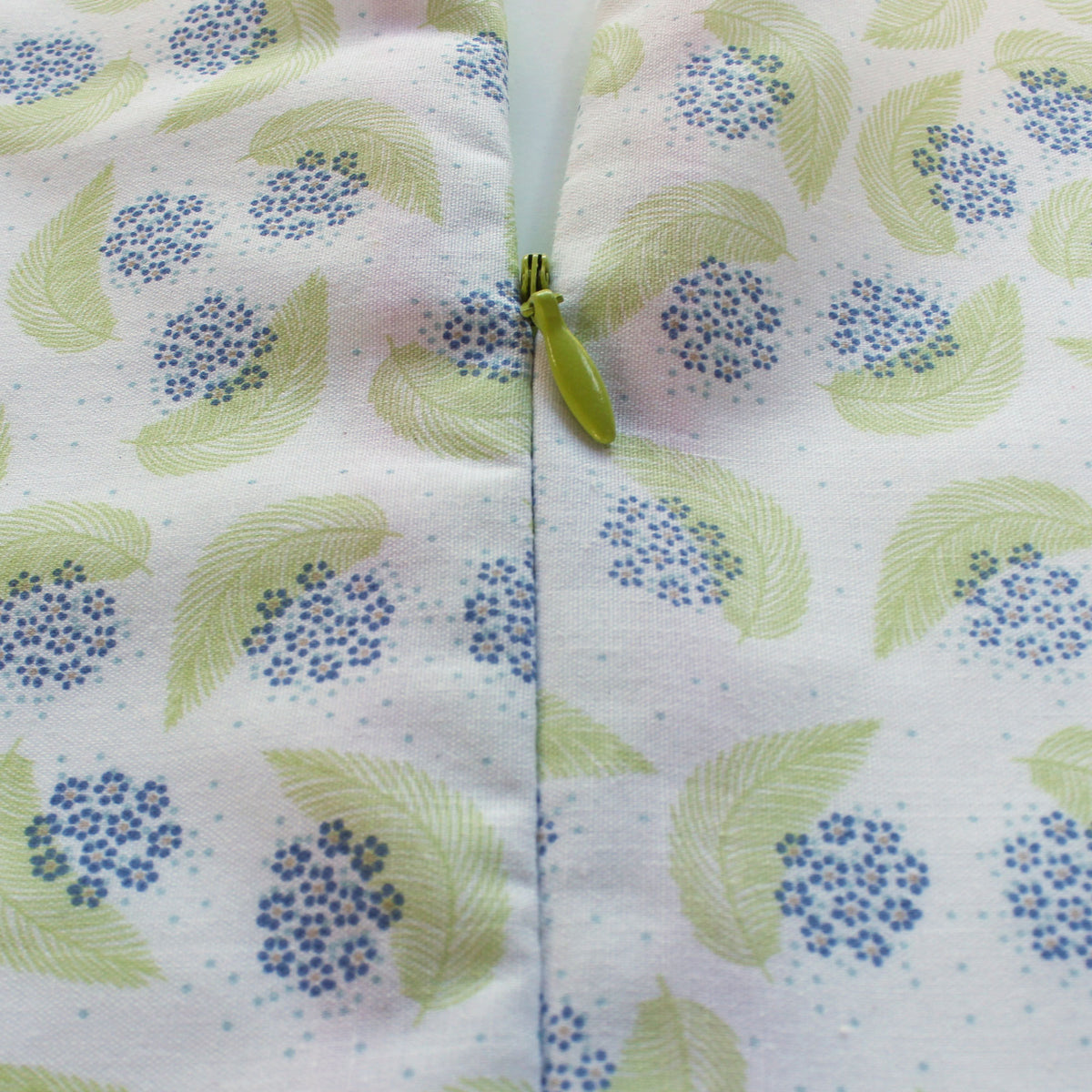Sofia Puff Sleeve Bias Channel

Welcome back to the Sofia sew-along. This post is for those of you making the bishop, cap, or elbow puff sleeve option. We will be attaching the sleeve to the bodice. These three sleeve styles feature an elasticized cap shoulder. A bias facing will be sewn along the sleeve cap, which will act as an elastic channel while finishing the curved sleeve edge.
This is the final step of completing the sleeves and bodice. If you are making the crop or peplum top, this tutorial marks the completion of your project. Congratulations!
If you are making the dress, we're not far from finishing, as we have the skirt to attach. Let's get started.
Attaching The Sleeve:
- With the sleeve and bodice right sides together, align the lower portion of the sleeve edge to the bodice's armhole edge. Match the bodice's upper folded edge to the sleeve's notches, and align the sleeve seam to the bodice's side seam.

- Pin the edges of the sleeve and bodice together. Due to the stretch created by the shirring, the bodice will need to be eased in along the sleeve's armhole.

- Sew the bodice and sleeve together in between the sleeve notches, stitching at 3/8" (1 cm) seam allowance. Work with the sleeve uppermost.

- Finish the underarm seam with a serge or zig-zag stitch, ending the stitch at the notches.

Bias Facing Channel:
- Turn and press one short end of the Sleeve Cap Bias Facing towards the wrong side by 1/2" (1.5 cm). Do not turn the other short end.
- Turn and press one long edge of the bias facing piece towards the wrong side by 1/4" (6 mm).

- The long, unpressed bias facing edge will be sewn to the sleeve cap edge. The upper edge of the bodice will be sandwiched in between the sleeve and the bias facing.
- Begin by matching the short folded bias facing edge to the second shirring stitch line along the bodice's upper edge. As you pin the pieces together, the right side of the bias facing will face the wrong side of the bodice, and the right side of the sleeve.

- At the other end of the bias facing, fold the remaining short end towards the wrong side by 1/2" (1.3 cm) and align the folded edge to the second line of shirring along the bodice's upper edge. Trim any excess length from the bias facing, if necessary.

- Sew the bias facing along the cap of the sleeve at 3/8" (1 cm) seam allowance.

- Trim the seam allowance along the cap, reducing it by half of its width.
- Clip notches into the seam allowance, along the sleeve cap edge. Space the notches approximately 2" (5 cm) apart. Cut to, but not through the stitch line.


- Turn the bias facing away from the sleeve and press along the seam.

- Understitch along the bias facing seam, sewing onto the bias facing and through the seam allowance, stitching approximately 1/8" (3 mm) away from the seam.



- Turn the bias facing in towards the wrong side of the sleeve. Press the finished edge of the sleeve cap. Pin the bias facing in place.

- Sew the remaining long folded edge of the bias facing to the sleeve. Edgestitch approximately 1/8" (3 mm) away from the folded edge. Do not edgestitch along the short ends of the bias facing.



- Refer to the Elastic Chart on page 4. Cut two lengths of 1/4" (6 mm) width elastic for the sleeves according to your size.
- Attach a safety pin to one end of an elastic strip and a pin to the other end. The pin will prevent the elastic from accidentally pulling through the channel as you feed the elastic through.

- Insert the safety pin into one end of the bias facing channel.

- As you exit the end of the channel, remove the safety pin. Allow the elastic to extend past the opening ends of the channel by a few millimeters.

- Secure the elastic with a pin at both ends of the channel.

- Edgestitch along the open ends of the channel, stitching approximately 1/8" (3 mm) from the folded edge. This stitch will secure the elastic at the ends of the channel.



YOU MAY ALSO LIKE:
Leave a comment
Comments will be approved before showing up.
Also in The Victory Patterns Blog

Pair the Sofia Bell Sleeve Strap with any sleeve option

How to sew a centered zipper
A centered zipper is one of the most usefull zippers to be able to sew. They are commonly used in skirts, dresses, and pants, as well as cushion covers and handbags. In this tutorial, we'll show you how to sew a centered zipper using directional sewing, which avoids the fabric from shifting in different directions once the zipper is sewn in.



